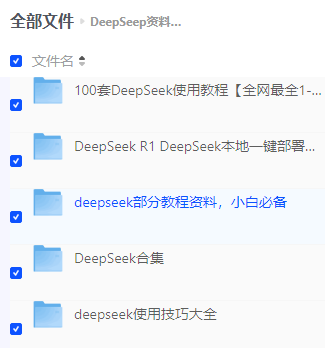关于线程池需要注意的几点
关于线程池需要注意的几点
指定线程名,异常处理
自定义ThreadFactory指定
public static final ThreadPoolExecutor executor = new ThreadPoolExecutor(1, 2, 1000, TimeUnit.MILLISECONDS, new SynchronousQueue<Runnable>(), (r) -> { Thread thread = new Thread(r); thread.setName("xxxx-pool-" + atomicInteger.getAndIncrement()); thread.setUncaughtExceptionHandler((t, e) -> { loggerHelper.errorLog(t.getName() + " 线程处理异常 : " + e.getMessage()); e.printStackTrace(); System.out.println(t.getName() + " 线程处理异常 : " + e.getMessage()); }); return thread;}, new ThreadPoolExecutor.AbortPolicy());ThreadPoolTaskExecutor 前缀指定方式
AtomicInteger atomicInteger = new AtomicInteger(); ThreadPoolTaskExecutor executor = new ThreadPoolTaskExecutor(); executor.setCorePoolSize(corePoolSize); executor.setMaxPoolSize(maxPoolSize); executor.setQueueCapacity(queueCapacity);// 前缀指定方式 //executor.setThreadNamePrefix("xxxx"); // rejection-policy:当pool已经达到max size的时候,如何处理新任务 // CALLER_RUNS:不在新线程中执行任务,而是有调用者所在的线程来执行 executor.setRejectedExecutionHandler(new ThreadPoolExecutor.CallerRunsPolicy()); executor.initialize(); executor.setThreadFactory((runnable)->{ Thread t = new Thread(runnable); t.setName(threadNamePrefix + atomicInteger.getAndIncrement()); t.setUncaughtExceptionHandler((th, e) -> { loggerHelper.errorLog(th.getName() + " xxxxxx 线程处理异常 : " + e.getMessage()); e.printStackTrace(); }); return t; }); return executor;线程池线程默认构造
static class DefaultThreadFactory implements ThreadFactory { private static final AtomicInteger poolNumber = new AtomicInteger(1); private final ThreadGroup group; private final AtomicInteger threadNumber = new AtomicInteger(1); private final String namePrefix; DefaultThreadFactory() { SecurityManager s = System.getSecurityManager(); group = (s != null) ? s.getThreadGroup() : Thread.currentThread().getThreadGroup(); namePrefix = "pool-" + poolNumber.getAndIncrement() + "-thread-"; } public Thread newThread(Runnable r) { Thread t = new Thread(group, r, namePrefix + threadNumber.getAndIncrement(), 0); if (t.isDaemon()) t.setDaemon(false); if (t.getPriority() != Thread.NORM_PRIORITY) t.setPriority(Thread.NORM_PRIORITY); return t; } }线程池队列类型待探讨指定
SynchronousQueue队列 适用场景:
执行时间很短的任务
特点: 执行时间很短的任务,无容量队列,提交一个任务创建一个线程。
使用 SynchronousQueue队列,特点是没有容量,没有线程是放不进去的。
对于执行时间较长任务,建议使用有界阻塞队列ArrayBlockingQueue,LinkedBlockingQueue建议指定容量
线程池线程数,以及针对不同业务线程池
core核心数和最大核心数根据实际业务来设置,具体需要压测测试线程池关闭问题(局部变量,切记关闭线程池)
否则请求一次会线程数增长,core不会被回收
测试示例
static void test(){ //方法内 定义线程池 ExecutorService pool = new org.apache.tomcat.util.threads.ThreadPoolExecutor(1, 2, 10, TimeUnit.SECONDS, new SynchronousQueue<Runnable>(), Executors.defaultThreadFactory(), new org.apache.tomcat.util.threads.ThreadPoolExecutor.AbortPolicy()); pool.execute(()->{ System.out.println(System.currentTimeMillis()); }); // 打开和关闭测试// pool.shutdown(); } public static void main(String[] args) throws InterruptedException { while (true){ TimeUnit.SECONDS.sleep(2); test(); } }使用visualVm可以观察进程线程数是否处于稳定
关闭线程
pool.shutdown(); //设置中断标志,等待执行任务线程执行结束后被打断,立即打断其他空闲线程
pool.shutdownNow(); //打断所有线程,任务队列里任务会被返回
根据jvm规范关闭线程,关闭守护线程,守护线程中非守护线程也会被关闭
实例如下
public static final ThreadPoolExecutor cardPool = new ThreadPoolExecutor(1, 4, 60L, TimeUnit.SECONDS, new ArrayBlockingQueue<>(MAX_TASK_SIZE), (r) -> { Thread t = new Thread(r); t.setDaemon(true); t.setName("xxxx" + ai.getAndIncrement()); t.setUncaughtExceptionHandler((th,ex)->{ //System.out.println(th.getName() + " " + ex.getMessage()); loggerHelper.errorLog(th.getName() + " " + ex.getMessage()); ex.printStackTrace(); }); return t; }); public static void main(String[] args) throws InterruptedException { cardPool.execute(()->{ try { TimeUnit.SECONDS.sleep(6); } catch (InterruptedException e) { e.printStackTrace(); } System.out.println(11111); }); TimeUnit.SECONDS.sleep(2); System.out.println("main end"); }提交任务
提交任务如果不是自己自定义异常,需要捕获异常,进行异常处理
try { pool.execute(() -> { //任务。。。}); }catch (RejectedExecutionException handler){//异常处理 根据业务 处理loggerHelper.infoLog(" xxxxxx : " + object + " 任务被拒绝..."); }关于CompletableFuture.runAsync异步处理任务
CompletableFuture.runAsync 默认是使用 ForkJoinPool.commonPool()线程池, 默认是cpu核心数 -1 线程池线程大小(1个cpu是1个cpu)
if (parallelism < 0 && // default 1 less than #cores (parallelism = Runtime.getRuntime().availableProcessors() - 1) <= 0) parallelism = 1; if (parallelism > MAX_CAP) parallelism = MAX_CAP;默认线程池(大于1核心,最大核心数 - 1) 并且线程异常无法捕获
CompletableFuture.runAsync 异常处理
CompletableFuture.runAsync(() -> { System.out.println(" ------- executor --- "); System.out.println(" ---------- " + 1 / 0);}, ExecutorUtil.executor).whenComplete((re,t)->{ System.out.println("结果: " + re); System.out.println(t.getMessage()); t.printStackTrace(); });也可以在任务里面 try catch 捕获处理


